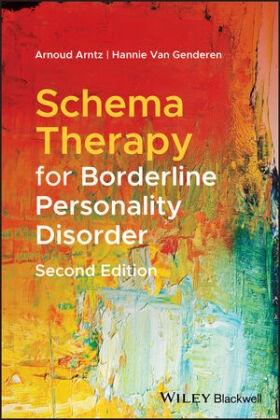Read more
This is the second edition of the book that sparked the current wave of interest in schema therapy. Although schema therapy was originally developed by Jeff Young in the USA, it was not until unprecedented outcome data was published from pioneering Dutch clinical trials with BPD patients that the clinical CBT community took serious notice. Schema therapy has now become one of the most popular forms of contemporary CBT. It has parallels to the 'third wave' of contextual behavioural science in that it develops traditional CBT in new directions, but while contextual behavioural science priorities behavioural techniques based on acceptance and mindfulness, schema therapy is more cognitive and draws on elements of experiential learning, object relations and psychodynamic therapy in addition to traditional CBT. The first edition of this book has sold more than 3,000 copies at a steady rate of around 500 units per year since 2009.
List of contents
About the Authors vii
Preface ix
Acknowledgments xi
Introduction 1
1 Borderline Personality Disorder 3
2 Schema Therapy for Borderline Personality Disorder 7
3 Treatment 31
4 The Therapeutic Relationship 49
5 Experiential Techniques 69
6 Cognitive Techniques 133
7 Behavioral Techniques 149
8 Specific Methods and Techniques 155
9 Methods per Mode 167
10 Schema Therapy in Other Settings and Modalities 201
11 Final Phase of Therapy 225
12 Conclusion 229
Appendix A: Brochure for Patients: Schema Therapy for People with Borderline Personality Disorder 233
Appendix B: Cognitive Diary for Modes 239
Appendix C: Positive Logbook 241
Appendix D: Historical Testing 243
Appendix E: Experiments 245
Appendix F: Homework Form 247
Appendix G: Problem Solving 249
Appendix H: Changing Behavioral Patterns 251
Appendix I: Eighteen Schemas 253
Appendix J: Coping Strategies 259
Appendix K: Form for the Historical Role Play 261
References 263
Index 271
About the author
Arnoud Arntz, PhD, is Professor of Clinical Psychology at the University of Amsterdam, the Netherlands. His research and clinical activities are directed at personality disorders and trauma-related mental health problems. He is well-known for his test of Schema Therapy as a treatment for Borderline and other Personality Disorders, and for his contributions to the development of the theory and the application of Schema Therapy.
Hannie van Genderen, MSc, is psychotherapist/clinical psychologist and supervisor and trainer in Schema Therapy. She was involved with the introduction of Schema Therapy for personality disorders in the Netherlands from the very beginning in 1996. She was involved with the foundation of the International Society of Schema Therapy and was member of the board as coordinator for Training and Certification from 2010-2012. From 2012-2016 she was chair of the Dutch Schema Therapy Association. Since 1990 she was involved as a senior consultant and clinical psychologist in the treatment and research of personality disorders in general and borderline personality disorder (BPS) in particular. In 2000 she became director of a Schema Therapy Institute, where so far about 4000 schema therapists were trained.
Summary
This is the second edition of the book that sparked the current wave of interest in schema therapy. Although schema therapy was originally developed by Jeff Young in the USA, it was not until unprecedented outcome data was published from pioneering Dutch clinical trials with BPD patients that the clinical CBT community took serious notice. Schema therapy has now become one of the most popular forms of contemporary CBT. It has parallels to the 'third wave' of contextual behavioural science in that it develops traditional CBT in new directions, but while contextual behavioural science priorities behavioural techniques based on acceptance and mindfulness, schema therapy is more cognitive and draws on elements of experiential learning, object relations and psychodynamic therapy in addition to traditional CBT. The first edition of this book has sold more than 3,000 copies at a steady rate of around 500 units per year since 2009.

